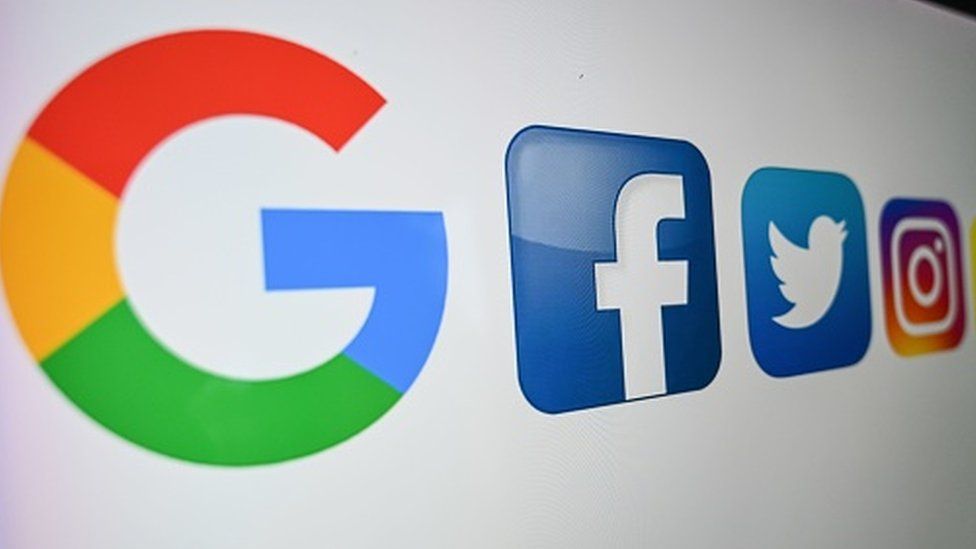

Australia news code: What’s this row with Facebook and Google all about?
Why In News?
A dispute over a planned law that would force tech giants Facebook and Google to pay for news content in Australia is being keenly watched worldwide.
The world-first law aims to address the media's loss of advertising revenue to US tech firms.
If passed, the law could have global consequences for tech firms and how we access news online.
But the tech firms have pushed back, with Facebook restricting news content in Australia.
The proposed law, News Media and Digital Platforms Mandatory Bargaining Code Bill 2020, mandates a bargaining code that aims to force Google and Facebook to compensate media companies for using their content.
The legislation sets a precedent in regulating social media across geographies, and is being closely watched the world over.
What is the draft news code?
The draft calls on tech companies to pay for content, though it does not define what it is worth.
The law would enable news companies to negotiate as a bloc with tech firms for content which appears in their news feeds and search results.
If negotiations fail, the matter could be arbitrated by the Australian Communications and Media Authority.
Background:
Australia’s legislation
Back in 2017, the Australian Competition and Consumer Commission (ACCC) recommended a voluntary code with an aim to address the negotiating skew between major digital platforms and media businesses. Based on these recommendations, the Australian government in 2019 asked various stakeholders and the ACCC to develop this voluntary code.
The ACCC, however, pointed out in April 2020 that the businesses were not likely to reach an agreement voluntarily. The government then asked it to draft a mandatory code. The draft law was released in July, and the government subsequently introduced the Bill after carrying out some significant amendments.
The provision requiring Google and Facebook to enter into payment negotiations with media companies — with an arbiter mandated to adjudicate if no agreement is reached — or face heavy fines, has met with resistance. The arbiter is deemed important mainly for smaller publishers who may face a negotiation skew with the platforms.
Also, while the original code envisaged limiting tech platforms from introducing algorithm changes that affected how a particular publisher’s news is consumed, and notifying these changes to the publishers, the Bill has cut down on the changes that have to be notified to news providers. This opens up the possibility of disrupting the level playing field between small and large news organisations.
In January, Google threatened to remove its search engine from Australia, and Facebook warned it could block Australian users from posting or sharing news links. Google has now backtracked — but the basic argument of both companies is that the media industry was already benefiting from traffic routed to them by the digital platforms, and that the proposed rules would expose the Internet companies to “unmanageable levels of financial and operational risk”.
Big Tech strategy elsewhere
Media outlets have reported that Facebook plans to launch its news tab feature (available in the US since 2019) in the UK, with likely tie-ups with The Guardian, The Economist, and The Independent. And that Google is rolling out its news offering platform, Google News Showcase.
Both these platforms aim to formalise payment pacts with news outlets. In a statement last month, Google said that News Showcase — which features story panels that allow participating publishers to package the stories that appear within Google’s news products — has on board more than 450 publications in a dozen countries, including Le Monde, Le Figaro, and Libération in France; El Cronista and La Gaceta in Argentina; TAG24 and Sachsische Zeitung in Germany; and Jornal do Commercio in Brazil.
The debate in India
Policymakers in India have so far focused on the dominance of intermediaries such as Google and Facebook, which are positioned in a way that service providers cannot reach customers except through these platforms. A substantial discussion on the impact of intermediary platforms on the health of news media outlets is yet to begin in any meaningful way.
According to a FICCI-EY report for 2020, there are 300 million users of online news sites, portals and aggregators in the country — making up approximately 46% of Internet users and 77% of smartphone users in India at the end of 2019. With 282 million unique visitors, India is the second largest online news consuming nation after China. In India, digital advertising spends in 2019 grew 24% year-on-year to Rs 27,900 crore, according to EY estimates, and are expected to grow to Rs 51,340 crore by 2022.
Dailyhunt and InShorts are the other major news aggregators in India. According to a January 2020 report by Harvard University’s Nieman Lab, publishers were initially paid Rs 5-6 lakh monthly for content hosted on Dailyhunt but they started to go off the platform after these terms were changed. Even without the conversation in India reaching the point where news aggregators are mandated to make payments to publishers, startups such as Dailyhunt and InShorts are yet to find a sustainable revenue model.
